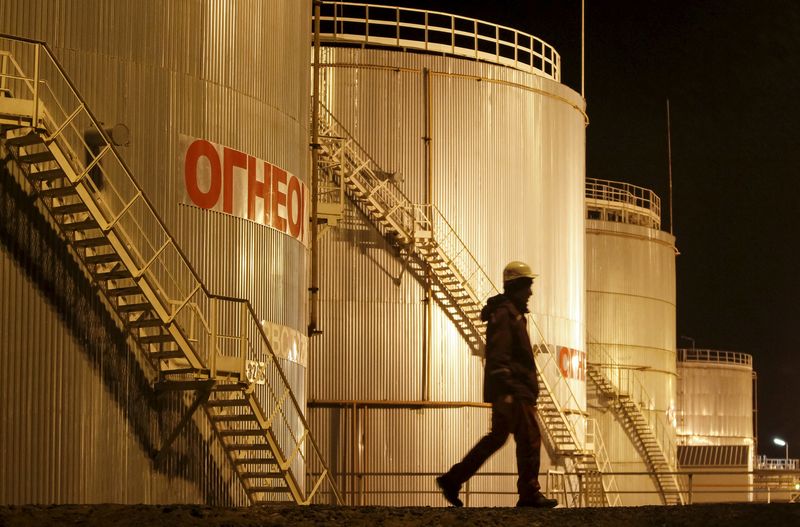By Barani Krishnan
Investing.com - Oil prices recovered from a two-day plunge on Wednesday after data showed a seventh weekly drawdown in U.S. crude inventories.
But the market’s upside was limited by worries that global producers may pump beyond agreed quotas as trouble festered within the OPEC+ cartel. Worries that the Delta variant of the Covid-19 may lead to another major breakout of the virus also triggered a risk-off element across markets.
New York-traded West Texas Intermediate crude, the benchmark for U.S. oil, settled down 74 cents, or 1%, at $72.94 a barrel.
WTI lost a combined 5.5% in the two previous sessions on concerns of disunity within the OPEC+ that groups the Saudi-led Organization of the Petroleum Exporting Countries and 10 other oil producers led by Russia.
London-traded Brent, the global benchmark for oil, settled up 69 cents, or 0.9%, at $74.12. Brent lost almost 5% between Monday and Tuesday.
U.S. crude inventories plummeted for a seventh week in a row, drawing over 40 million barrels combined, on summer demand for fuels amid strong economic recovery from the coronavirus pandemic, data from the Energy Information Administration showed.
Crude stockpiles in the world’s largest oil consuming country fell by 6.87 million barrels last week, the EIA said. Industry analysts tracked by Investing.com had anticipated a drawdown of just about 4.0 million barrels for crude during the week ended July 2.
Crude inventories have fallen without a break each week since May 17, totaling 40.5 million barrels or averaging 5.8 million barrels per week.
The big draw came as U.S. refiners focus on pushing out as much gasoline as they can for this summer to meet projected demand. According to the EIA, refiners operated last week at 92.2 percent of capacity, close to levels seen in the summer of 2019 — well before the onset of the pandemic.
Gasoline inventories on their own fell by 6.1 million barrels last week, versus forecasts for a drawdown of 1.8 million barrels — demonstrating the stepped-up refining activity.
Inventories of distillates that include diesel and heating oil, rose by 1.6 million barrels, forming the only bearish component in the dataset released by the EIA. Analysts had forecast a build of just 150,000 barrels here.
Oil plunged earlier this week after a fallout between one-time staunch OPEC members, Saudi Arabia and the UAE, threatened to undo production cuts by the larger 23-member OPEC+ alliance that had succeeded in bringing oil prices from pandemic lows of minus $40 per barrel for WTI to current seven-year highs.
